Main menu
Common skin conditions

NEWS
Join DermNet PRO
Read more
Quick links
Digital myxoid pseudocyst — extra information
Digital myxoid pseudocyst
Author: A/Prof Amanda Oakley, Dermatologist, Hamilton, New Zealand, 1998. Updated by Dr Oakley, May 2016.
What is a digital myxoid pseudocyst?
A digital myxoid pseudocyst is a shiny papule found at the end of a finger or toe, close to the nail. It is called a pseudocyst because it is not surrounded by a capsule, unlike a true cyst. It is also called a myxoid cyst, a mucous cyst, a digital ganglion cyst, and a digital synovial cyst.
What causes a digital myxoid pseudocyst?
The cyst arises from degeneration in the connective tissue on the top of the last segment of the finger.
There appear to be two variations. The first is a form of focal mucinosis, a condition characterised by abnormal deposits of mucopolysaccharides (mucins) in the skin. The other variation arises from extension of the lining of the finger joint and is due to osteoarthritis – a type of ganglion. See pathology of a digital myxoid pseudocyst.
What are the clinical features of a digital myxoid pseudocyst?
The digital pseudocyst is semi-translucent, with a smooth shiny surface. It is most often located within a centimetre of the base of the nail. It often causes a groove in the nail. This may be up to several millimetres across and extends the length of the nail.
Jelly-like sticky fluid may be expressed from the pseudocyst (sometimes tinged with blood).
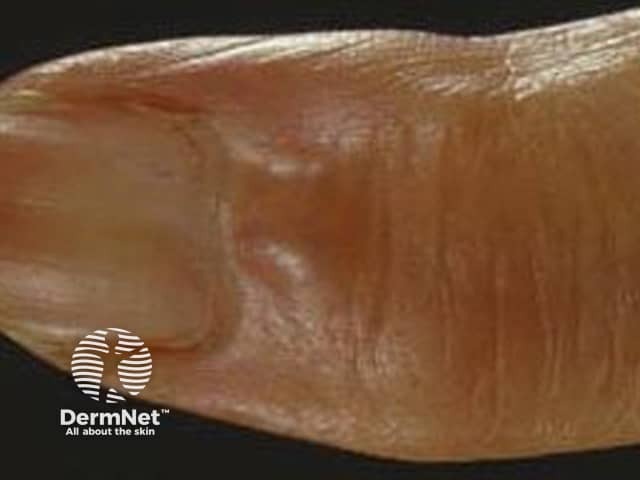
Myxoid cyst
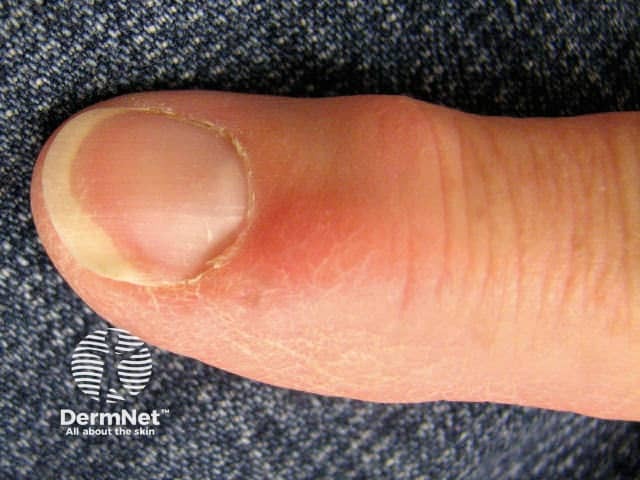
Myxoid cyst
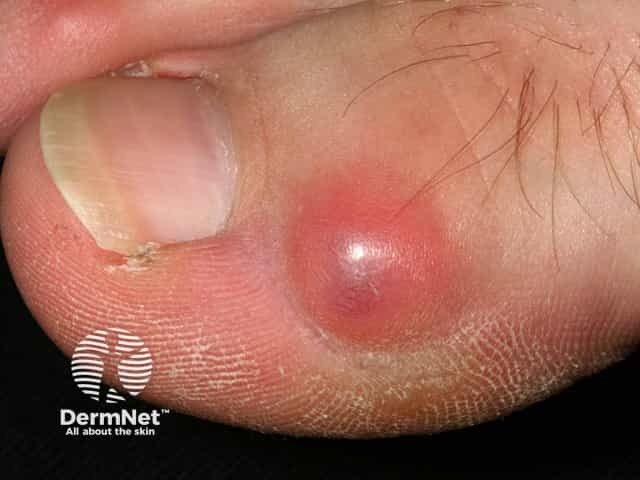
Myxoid cyst

Myxoid cyst
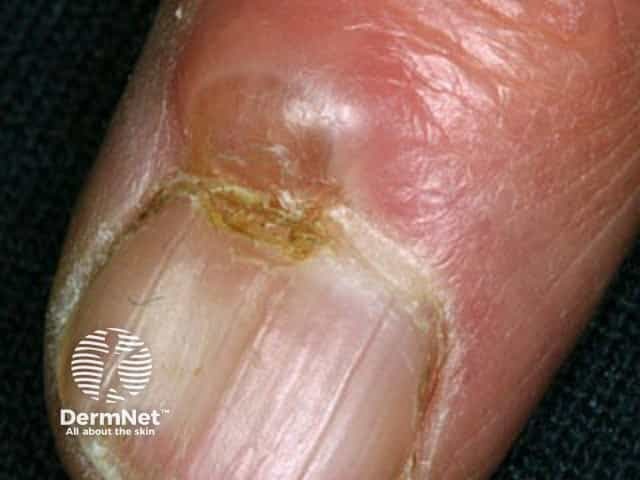
Myxoid cyst
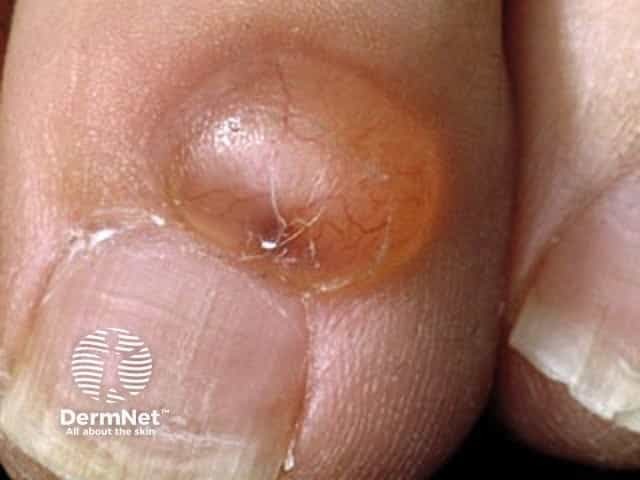
Myxoid cyst
See more images of digital myxoid pseudocysts.
What is the treatment for digital myxoid pseudocyst?
Treatments which may be successful for digital myxoid pseudocyst include:
- Repeatedly pressing firmly on the cyst
- Squeezing out its contents (make a hole with a sterile needle)
- Cryotherapy (freezing)
- Steroid injection
- Sclerosant injection
- Surgical removal.
Unfortunately, digital myxoid pseudocysts often recur, whatever treatment is used.
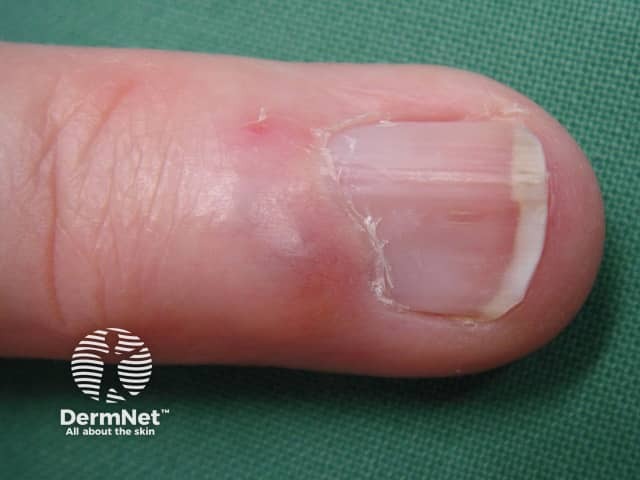
Myxoid cyst
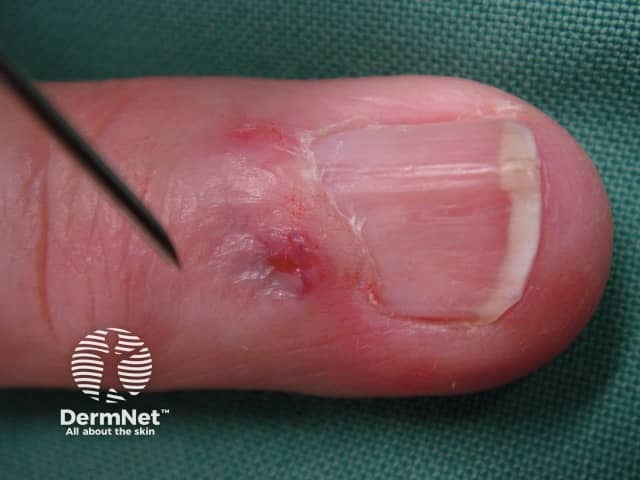
Needling a myxoid cyst
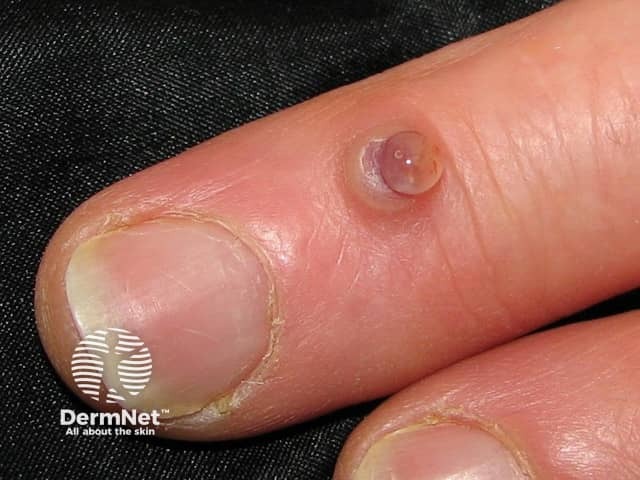
Needling a myxoid cyst
On DermNet
Other websites
- Digital mucous cyst — Medscape Reference
- Digital Myxoid Cyst — British Association of Dermatologists
